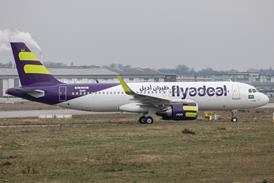Ramon Lopez/WASHINGTON DC
US Air Force officials are awaiting a green light from the incoming Bush Administration to produce and field an advanced air-dropped device able to detect mobile missile launchers.
The inability to find Iraqi Scud missile launchers during the 1991 Gulf War prompted the USAF to develop the technology. Costing $25,000 per unit, the Advanced Remote Ground Unattended Sensor (ARGUS) uses acoustic and seismic sensors to detect mobile ballistic missile launchers.
ARGUS will spot the movement of a launcher and pass this information, by satellite communications, to an air operations centre. Over-head spacecraft, an unmanned air vehicle or a reconnaissance aircraft would then confirm the sighting.
After it is dropped from an aircraft the 1.8m (6ft) long, 41kg (90lb) ARGUS buries itself in the ground, leaving the tail-mounted sensor exposed. Its battery will last up to six months.

ARGUS is a significant improvement over the earlier Igloo White acoustic device used during the Vietnam War. Igloo White could not differentiate a soldier from a passing elephant and had no on-board processing, says a USAF official. ARGUS compares engine noise against the acoustic signature of a moving missile launcher which is stored in its microprocessor. ARGUS also uses GPS satellite navigation to pinpoint its location.
The USAF launched an advanced concepts technology demonstration in 1997 and has showcased ARGUS during subsequent military exercises. According to Capt James Lonier, the ARGUS programme manager, it can detect a target at 500m and classify it at 250m. "On a cool, dry night, you can have a detection range of several kilometers," he adds.
Sandia National Laboratories has built ARGUS prototypes for flight testing from the USAF Boeing F-15E Strike Eagle. Lonier says ARGUS is ready for production, and he hopes the Bush Administration's revised fiscal year 2002 defence budget request will include initial production funds. He says ARGUS could be available for fielding by the end of FY03.
Plans call for integration of different sensors on ARGUS for additional missions, such as battle damage assessment and time critical targeting. Lonier says the US Navy and US Marine are also interested in ARGUS.
Source: Flight International























